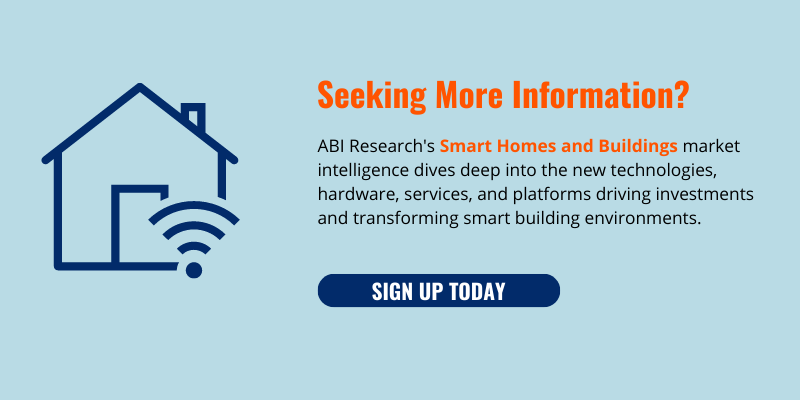Networked Lighting Control (NLC) "connected lighting" systems are at the forefront of smart technologies available to building owners and tenants, as well as energy companies and regulators, as they look to improve the efficiency and appeal of their commercial buildings. NLCs deliver automated and dynamic lighting networks that optimize energy consumption by connecting with sensors throughout a property. Connectivity is the next step in driving energy savings from upgraded lighting capabilities. The still ongoing switch to Light-Emitting Diode (LED) luminaires from traditional bulbs can bring a 50% energy use reduction. NLC leverages LED to enable dynamic light dimming and operation to ensure lights are only on as needed. Key to such control is lighting level and occupancy sensors, but the NLC system can be extended beyond just efficient lighting to provide a backbone for a host of other connected applications, such as indoor location services for asset tracking in a warehouse or product discovery in retail stores.
ABI Research forecasts that the market for NLC equipment (lights, switches, and controllers) will grow at a Compound Annual Growth Rate (CAGR) of 22.6%—reaching 220 million annual shipments by 2030. Several key factors are swelling demand for NLCs.
Catalysts for Connected Lighting Adoption
Corporate sustainability goals, workspace optimization, improved building experiences, automation, financial incentives, and regulatory support are all combining to catalyze NLC connected lighting demand.
- Sustainability Agendas: There’s a concerted effort among regulators, building owners, and tenants within the smart commercial building industry to reduce energy consumption. NLCs are a crucial enabler of meeting building energy efficiency goals for both new and retrofitted buildings, as the technology can reduce lighting power consumption by at least 25%.
- Optimized Workspaces: In the wake of the long-term effects of the COVID-19 pandemic, building owners are increasingly expected to provide work environments that are molded to the specific tenancy and occupancy demands of enterprise teams. NLC connected lighting, especially wireless-enabled NLC, provides flexibility for spaces to be more easily configured to demand.
- Improved Building Experiences: NLC lighting systems, leveraging sensor-level understanding of room occupancy and more, can provide rich insight into space utilization.
- Automated Building Processes: Although not as prevalent as during the COVID-19 pandemic, staffing is still one of the top concerns among property managers. To shield against increasing staffing costs and reduced employee availability, real estate managers can leverage connected lighting to enable automation in the operation and maintenance of building services. One study demonstrated an 8% increase in employee productivity where NLCs were deployed.
- Lighting-as-a-Service: NLC lightingdeployment can be pushed to be an operating expense spread over a multi-year contract, with much of the payments funded through the reduced energy costs and other benefits of smart lighting. This is a model that has particular appeal where there are ESCO incentives for deploying an NLC system.
- The Ongoing Shift from Fluorescent Lighting: In many cases, the upgrade from fluorescent to LED took place without including embedded connectivity. Still, as fluorescent lighting production and sales will be forbidden within the European Union (EU) from September this year, NLC lighting vendors will target those still looking to replace fluorescent installations.
Most Significant Factors That Limit the Connected Lighting Installed Base
The leading markets for NLC lighting systems, North America and Western Europe, have already revisited their lighting systems in the past decade and have primarily settled on non-connected LED lighting. Given that NLC and LED go hand in hand, this transitional period was a prime opportunity to integrate connectivity and wider sensing capabilities. The long life span of NLC makes most commercial building managers in these regions unwilling to jump to NLC within the next 10 to 15 years.
Another detriment to connected lighting adoption is the lack of enthusiasm for digital lighting systems in the critical North American market. Commercial building managers in the United States hesitate to buy digital lighting systems, such as NLC. Instead, they are content with the cheaper and more prevalent 0 Volt (V) to 10 V analog controls for LED and dimming functionality. Although 0 V to 10 V lighting systems are unscalable and more complex, the U.S. market still sees the continued use of these relatively dated systems as preferable over a more expensive digital LED network.
On a broader scale, other factors negatively impacting NLC lighting demand include the following:
- The premium price associated with NLC deployment and building retrofitting.
- NLC is still not a universal concept within the commercial building industry.
- With a range of competing and often proprietary vendor approaches, clients fear long-term vendor lock-in.
NLC Technology Analysis to Establish Sustained Market Inroads
Although NLC lighting systems have been in the market for over a decade, uptake remains limited. However, we’re at a key inflection point as commercial buildings increasingly require energy- and maintenance-efficient solutions at which NLC excels. Going forward, ABI Research firmly believes connected lighting technology providers must be cognizant of the following technology dynamics reshaping the NLC market:
- Wireless connectivity, such as Bluetooth and Zigbee, is preferable over wired connectivity for NLC deployments. Wireless keeps costs down and simplifies retrofit building projects.
- NLC is practical for more than just the traditional smart building due to the omnipresent nature of lighting networks. Internet of Things (IoT) applications, such as high-value equipment tracking and office space usage, push the boundary for NLCs.
- Building Management Systems (BMSs) won’t play a prominent role in NLC lighting functionality or the great market potential for adoption. While a BMS manages the largest buildings by floor space in the United States, these buildings account for only a small proportion of commercial properties. Connected lighting can potentially expand connectivity and automation to a market well beyond those locations with existing BMS deployments.
- There’s no consensus on which wireless protocols will flourish in the NLC market, even among players using the same silicon. For example, those leveraging Bluetooth mesh or 802.15.4 standard silicon typically use a proprietary software stack. However, the push to a broader addressable market than ever before will certainly boost the appeal for more open, multi-vendor ecosystems.
Learn more about connected lighting in the Research Highlight Delving into the Opportunities Set Up by Networked Lighting Control. This content is part of ABI Research's Smart Homes & Buildings Research Service.




